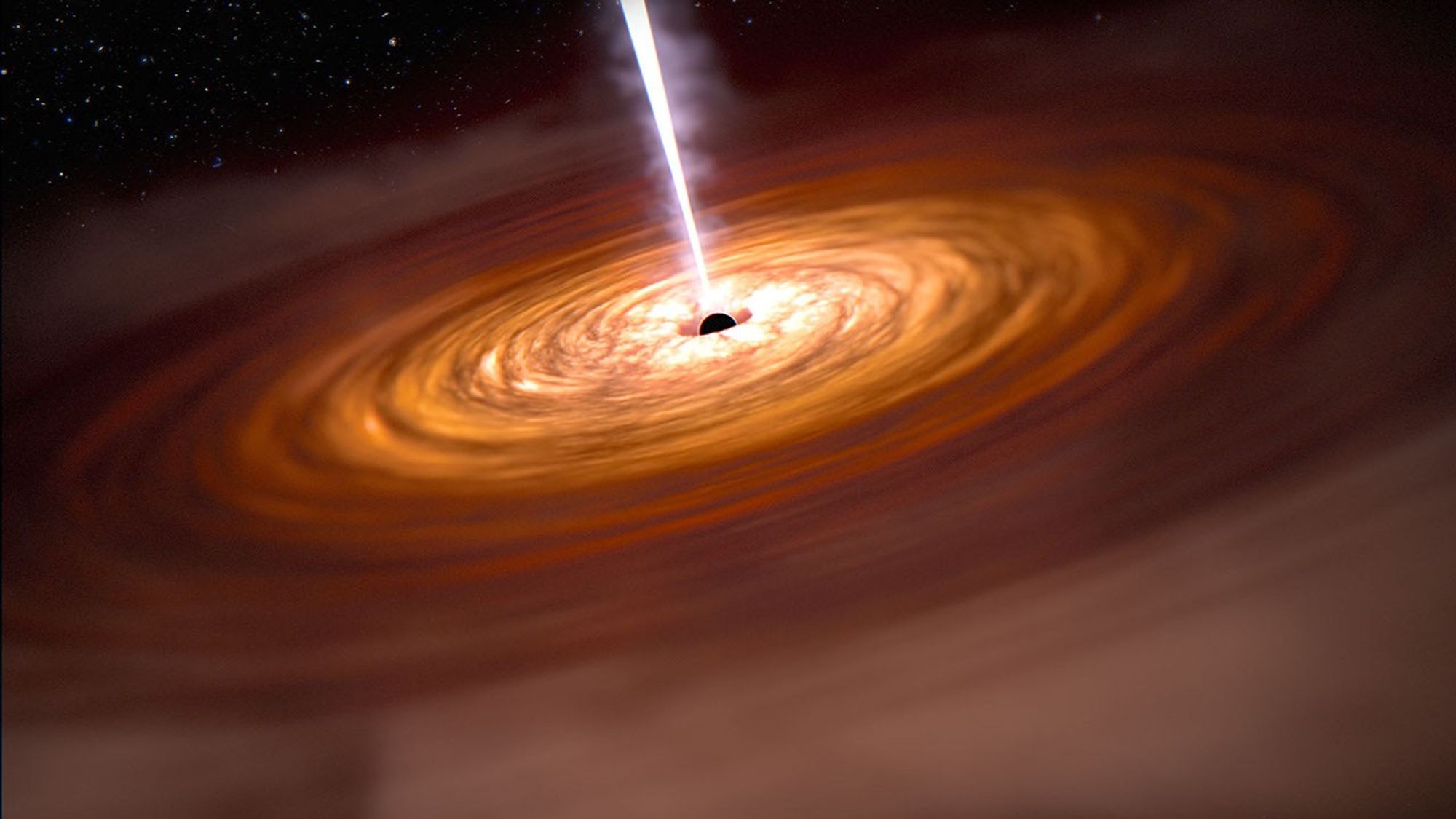How Do We Know There Are Black Holes?
They are among the most mysterious and fascinating features of the universe.
Black holes are often described as consuming their surrounding gas, the result of gravity so intense that nothing can escape its pull, not even the fastest known traveler in the universe: light itself. But if black holes don’t emit or reflect light, which means we can’t see them, how do astronomers know they are there?
The answer applies to many subjects studied in physics and deep-space astronomy — when you can’t observe something directly, or you can’t explain something you are seeing, you make educated guesses based on what you do see: the effect on other objects. On Earth, you can know it’s a windy day without stepping outside, because a flag is flapping. Astronomers know there is a black hole when the stars or gas around it are distorted or otherwise changed. These effects show up in a few ways.
Astronomers can observe a star accelerating in orbit around an unseen object (see video above). By measuring the orbiting star’s rate of acceleration, astronomers can calculate the mass of the object pulling on it. When this mass is so compact and large that nothing else can explain it, astronomers conclude it is a black hole.

In other instances, X-ray telescopes can observe light from binary systems where matter is pulled from the outer layers of a star that orbits a black hole. These black holes accumulate cosmic matter around themselves in a swirling pattern called an accretion disk. Gas particles in the disk accelerate and collide, heating to millions of degrees and giving off detectable X-rays. Black holes causing these types of phenomena are at least a few times the mass of the Sun and are classified as stellar-mass black holes.
On a larger scale, supermassive black holes have a mass of more than 1 million Suns, and so must develop and grow very differently than stellar-mass black holes. Astronomers often determine the presence of supermassive black holes in galaxies using data known as spectra, which can differentiate signals from the hot, faster gas swirling in the black hole’s accretion disk from the cooler, slower gas associated with forming stars. According to observations of intense gravitational attraction and energy in the center of galaxies made by the Hubble Space Telescope since the early 1990s, there is evidence for supermassive black holes at the heart of nearly all large galaxies, including our Milky Way.
With greater mass and thus greater gravity, supermassive black holes attract more matter that becomes hotter and more volatile. In some cases, this super-heated matter shoots off into the universe as jets of gas that can be millions of light-years long. Astronomers have observed these gas ejections, known as outflows, and see it as a way of regulating galaxy expansion and the formation of new stars.
To see the dynamic dance of dust, stars, and gas clouds being shred apart and falling into a black hole, astronomers need powerful telescopes. Hubble made significant progress in confirming and studying galactic supermassive black holes. The James Webb Space Telescope’s powerful infrared instruments see through the cosmic dust and can help researchers analyze the details of outflows, providing new information about this process and the black hole’s role in galaxy evolution.
Webb is able to observe some of the earliest galaxies and black holes that existed. Astronomers think early black holes developed at a much faster rate than black holes that more recently formed nearby, which means that observing these earlier cosmic citizens would shed light on the nature of their descendants, the neighbors we know well and have studied for decades.



























